How to Carve a Willow Whistle
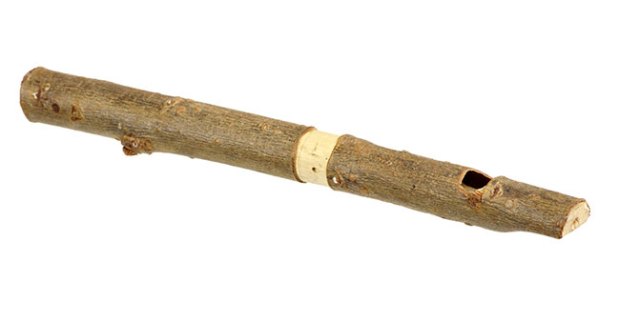
Make a variable-pitch whistle that you can use to signal, play a tune or just show off your carving skills.
WHAT YOU’LL NEED
- Pocketknife
- Small piece of willow branch, 3 to 5 inches long, about the diameter of your little finger
WHAT YOU’LL DO
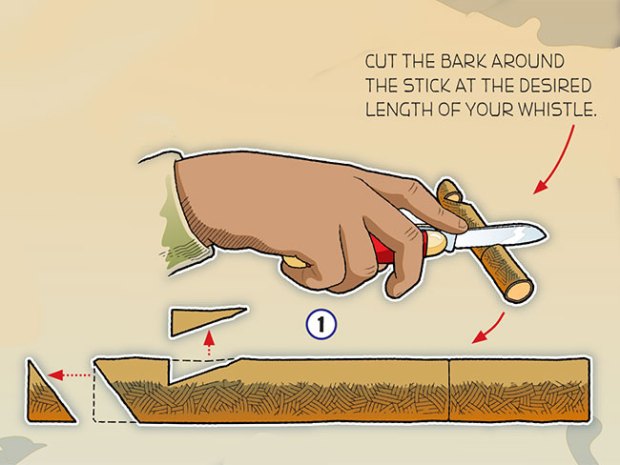
1. Cut a 45-degree bevel on one end of the stick. This will be the mouthpiece of the whistle. Just forward of the bevel and on top of the whistle, cut a notch with a 90-degree edge close to the bevel and angle off the top. This will be used for airflow. Cut the bark around the stick at the desired length of your whistle.
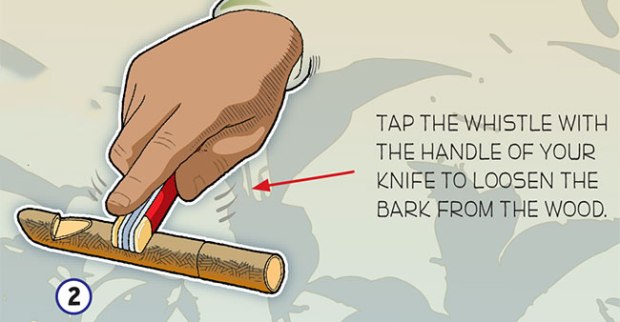
2. Tap the whistle with the handle of your knife to loosen the bark from the wood. After tapping all sides of the whistle, twist the bark loose. Keep at it until the bark eventually comes off, but be careful: The bark must remain in one piece.
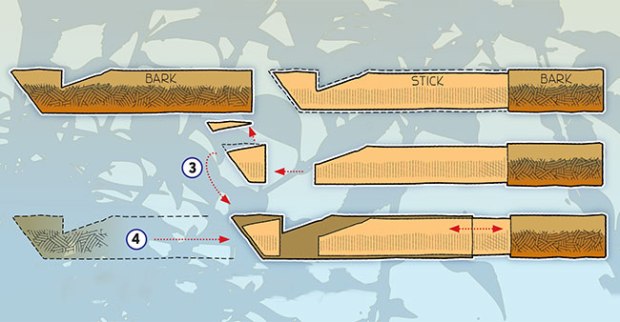
3. Take the stick and cut off the beveled part flush with the 90-degree cut of the air hole. Cut a small sliver off the top of the beveled part of the stick. This will make the hole needed to allow air to go into the whistle. This part of the stick will then become part of the mouthpiece. Insert this mouthpiece part into the angled end of the bark piece.
4. Put the remaining part of the stick back into the other end of the bark, and the whistle is complete. Blow into the whistle and slide the stick up and down in the bark. This will give you the range of your whistle tones.
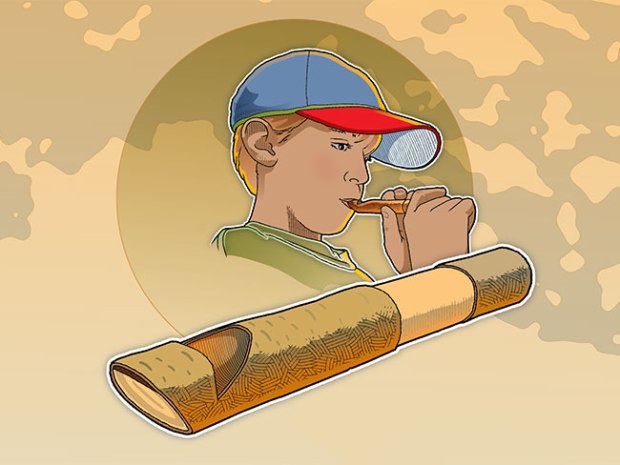
can u use more than just willow
Amazing!!
I remember my Grampa making these whistles when I was a kid (late 1930’s). I had forgotten until refreshed here. I have an 8 year old greatgrandson that will learn the skill from me. A skill that will stay with him always.. Thank
You. “0ld guy” from Ohio.
wow
My dad showed me how to make this when we asked to go on walks I was about 8-9 years old (now in my 40s) so glad that I found your site to give me a wee refresher know going to show my kids how to do this
Made these in the 60s, poplar works the best, enjoy
Used to make these in the early 60`s , try Poplar , good thick bark , have fun
i wonder what it sounds like
This is a really fun project and this is also good to do with family!
That looks hard!